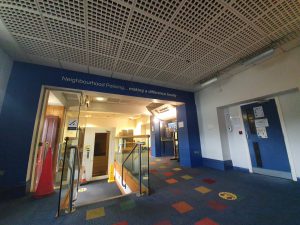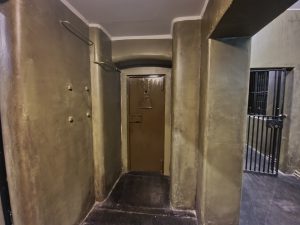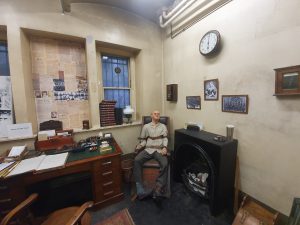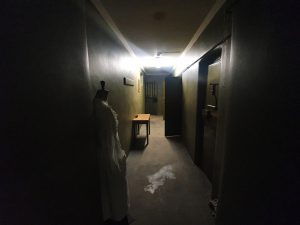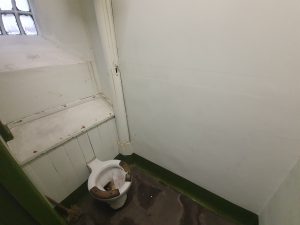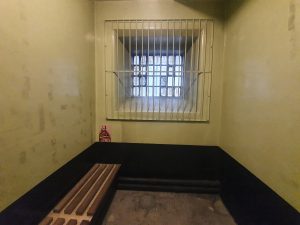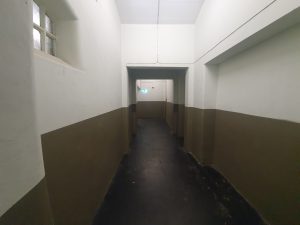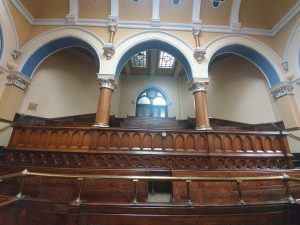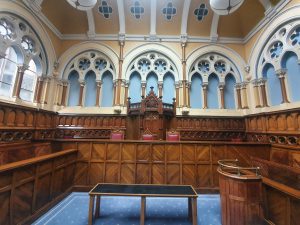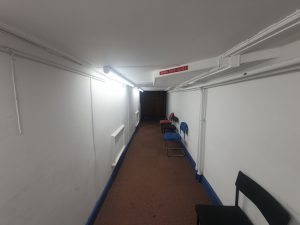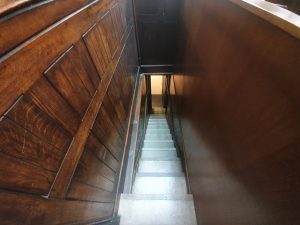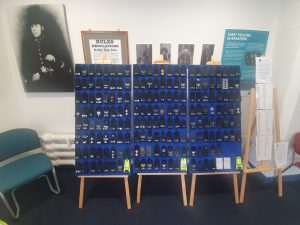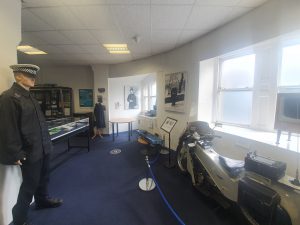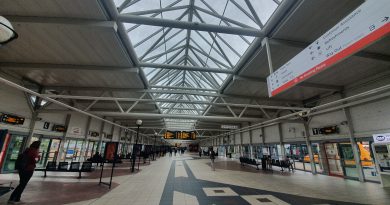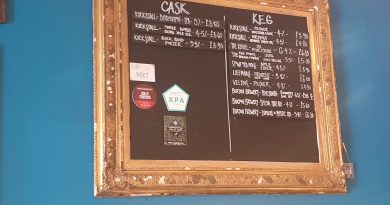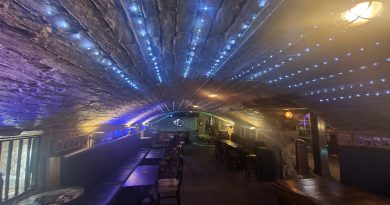Bradford – Bradford Police Museum
The Bradford Police Museum can only be accessed as part of a guided tour, which costs £5 per person. As an early aside, Google insist that they’re closed, even though they (and I) have told them that they’re not. The bonus for this tour is that Covid rules issued by the council, who are responsible for the building, means they are having to do private tours only and for no additional charge. The police museum is located in Bradford City Hall, which was constructed between 1870 and 1873 and was inspired by the Palazzo Vecchio in Florence, where I managed to get to in 2020.
The initial welcome was friendly, but the volunteers, who I think are all former police officers, were dealing with an abusive visitor to the premises. He refused to wear a mask as the law said he didn’t have to. The guide explained the council had set additional rules to protect their staff and that was the end of it. The guy continued to be rude to the guides and I although I must admit that I liked watching the free drama unfolding in front of me, I felt sorry for the guide. Fortunately, they weren’t going on a tour, they were there for other reasons.
My tour then began by being walked around the building so that I could enter as a criminal would have done. The building was closed for this purpose in the 1970s, when it was used by the prison service in its final years. The guide explained how the police would have checked my details and also showed me where they’re hoping to fit out next year a room that was used by the doctor if he was called.
This is a fake door which was put in during the filming of Peaky Blinders, and that bit of the corridor to the right is apparently in the programme. However, the element afterwards was filmed elsewhere, but the guide said you wouldn’t know as they’d edited it so well. There’s an original door exactly like the fake one which is to the right of me when I took the photo, although it doesn’t go anywhere as it has been bricked up behind the door.
The former office of the person in charge and they’ve got an original restraining chair from the nineteenth century. Apparently a fair number of visitors comment that the model looks a bit like Ian Hislop….
There are male and female cells here, but the male cells are now used by the council for file storage.
A toilet of unknown age, with the cells not having any private facilities.
One of the cells and this one has had some ghostly incidents. There was once a slope to this cell so if someone was sick it would just pour towards the gutter, so standing near the window would have been sensible. I was originally shown into a different cell, but it became apparent that the ceiling appeared to be falling down. The guide thought best that we didn’t linger in there, but it’s a reminder of how expensive and challenging these buildings are to keep well maintained.
I was told in advance that there was only one place where I couldn’t take photos, which was in a cell used in the 1970s for prisoners on their way to court, or on their way back. There’s graffiti all over the walls which has now become an important piece of social history and I’m impressed that they’ve kept it. They don’t want photos taking here though as many of the prisoners who had written on the walls are still alive. One guy had written on the back of the door “I had expected two years I got life” and someone elsewhere in the cell had written “expected life, didn’t get it”, so swings and roundabouts….
Those cells are inaccessible for those on the tour, they’re the ones used for storage by the council.
A slightly wonky photo unfortunately. But I was taken up the stairs from the cells into the court room, with this photo showing mostly the public galleries.
And standing looking at where the judge would have sat. The council’s Chief Executive has taken the judge’s former robing room as their office, so there’s no way to sit in that chair. Apparently younger children are allowed to scramble across, but it’s thought best not to let adults do it. This is also where some people get married, which seems a slightly odd location, but each to their own…..
That witness box to the right hand side of the photo has only just been recovered from eBay a few weeks ago. It went missing in the 1970s and someone observant noticed that it was for sale on eBay and fortunately the seller co-operated with returning it.
The guide mentioned that there was a tunnel underneath the judge’s chair which was once used by anyone needing to cross the courtroom, as it wasn’t allowed to cross in front of the judge. The guide said it was usually just children who wanted to use this tunnel today, but I felt the need to have a little look as well.
These were the steps that I was taken up into the courtroom, and then back down again.
After going back into the former holding area for prisoners, I was then shown towards where the police museum is. There has been a deliberate decision not to feature the Yorkshire Ripper or the Bradford stadium fire as it was thought too emotional and too raw. There’s more of a focus on the Victorian policing, which is appropriate given the age of the building.
The guide explained this was the former police briefing room and he had used this when in the police force. I had expected a tour of around 45 minutes, but the guide was so conversational, engaging and interesting that my tour lasted for nearly three hours. I was fascinated to hear the stories from his time in the police force and he was very knowledgeable about the history of the building and the criminal justice system.
These are challenging times for the museum given the limited number of people on tours and also the relatively low number of people booking anyway. However, for the £5 admission fee, I think it’s superb value for money. Definitely recommended and I was delighted with the engagement from the tour guide, very pleased to have gone on this.


